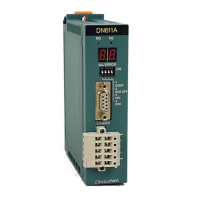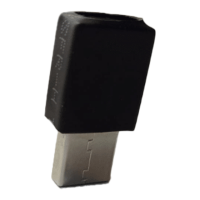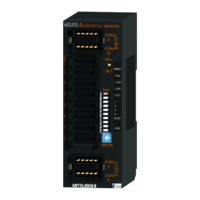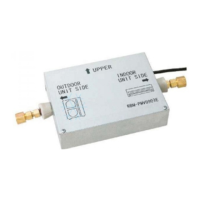6F8C0845
141
8.4 Network Installation
8
(2) Installation without piping
• For cable protection, either pass the cables through a floor duct or use a wire pro-
tector cable cover. In this case, do not lay them together with wires or cables car-
rying high current or high voltage.
• To keep the cables free from damage, lay them in the space between walls, or
under the floor where devices free of trouble by electromagnetic induction are
located.
• In case of laying cables parallel with, close to, or across low-voltage indoor wires,
observe the cable separation standards specified.
• In vertically laying cables on walls apart from the floor, clamp the cables about
every 3 meters to keep them free of damage.
• When bending cables, make sure not to bend them in excess of the minimum
allowable bending radius specified.
(3) Installation with piping
• Do not lay cables along with other cables of high current in the same duct.
• When bending pipes, make sure that their angles are less than 90 degrees.
• When bending pipes, make sure that their bending radius is 6 times or more the
pipe's inside diameter and that each of the cables in the pipe does not exceed the
minimum allowable bending radius.
• Ground metal pipes.
(4) Separation from Other Cables
Normally, separate the network cables 2 meters away from the power lines and other
devices which produce a magnetic field or an electric field. If it is difficult to separate
them by a space of 2 meters, determine a separation distance according to the actual
voltage and amperage of sources of induction, referring to the table below.
Transmission signals are so weak that sources of induction should not exceed 440 V,
100 A.
Considering protection from noise, a covered metal cable duct or steel-made protection
tube is recommended. The recommended minimum separation distances between
parallel signal lines and power cables in using the above means of protection are shown
in the table below.
Table 8-2 Recommended Minimum Separation Distances
Amperage/Voltage of
Induction Source
Minimum Distance Between Parallel Lines (mm)
Over 100 A 100 A or less 50 A or less 10 A or less
Over 440 V
440 V or less
220 V or less
110 V or less
60 V or less
2000
2000
2000
2000
2000
2000
600
600
600
500
2000
600
600
500
300
2000
600
500
300
150
Table 8-3 Recommended Minimum Separation Distances
(Installation in Covered Metal Ducts or Steel Protection Tubes) (In millimeters)
Cabling Method Covered Metal Duct or Steel Protection Tube
Total parallel distance
10 m or
less
25 m or
less
100 m or
less
200 m or
less
500 m or
less
501 m or
more
Power cable
150 V or less, 10 A or less 10 10 50 100 200 250
250 V or less, 50 A or less 10 50 150 200 250 250
400 V or less, 100 A or
less
50 100 200 250 250 250
500 V or less, 200 A or
less
100 200 250 250 250 250
Over the above 500 or more

